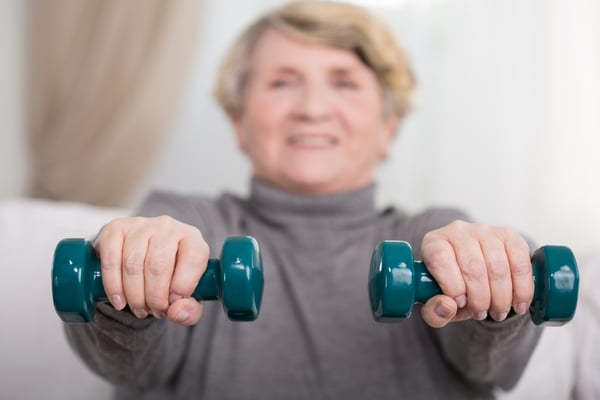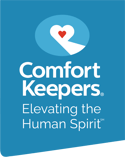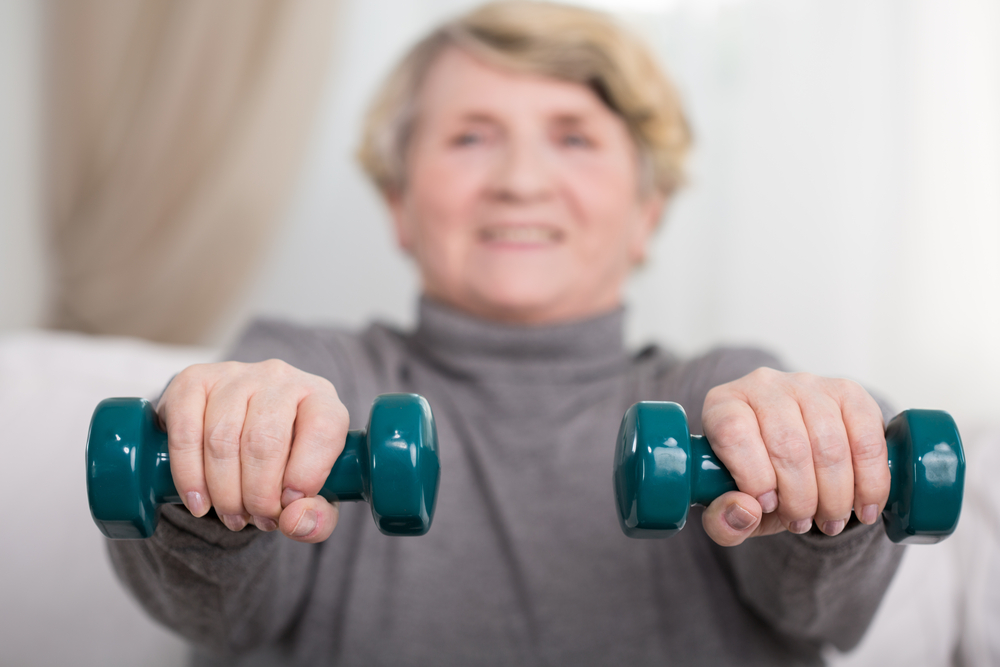Chronic obstructive pulmonary disease (COPD) is a collection of lung diseases that cause blocked airways and make breathing difficult. It can result in serious complications

Exercise
Some people with COPD do not exercise as it can be very fatiguing, especially at first. Exercising may seem like a challenge when you have trouble breathing from COPD. However, regular physical activity can actually strengthen your respiratory muscles, improve your circulation, facilitate more efficient oxygen use, and decrease your COPD symptoms. You should always check with your doctor before starting any exercise program but even with COPD, you can experience beneficial results. Here is a resource guide for exercise from the COPD foundation.
Why Exercise with COPD?
Regular exercise has many benefits. Exercise, especially aerobic exercise, can:
- Improve your circulation and help the body better use oxygen
- Improve your COPD symptoms
- Build energy levels so you can do more activities without becoming tired or short of breath
- Strengthen your heart and cardiovascular system
- Increase endurance
- Lower blood pressure
- Improve muscle tone and strength; improve balance and joint flexibility
- Strengthen bones
- Help reduce body fat and help you reach a healthy weight
- Help reduce stress, tension, anxiety, and depression
- Boost self-image and self-esteem; make you look fit and feel healthy
- Improve sleep
- Make you feel more relaxed and rested
The Cleveland Clinic has a blog that discusses the parameters of a program and proper things to think about like moderation of your program and when to exercise. Click here for the entire blog.
Recommended Exercises
The American Lung Association recommends three basic types of exercise:
- Stretching relaxes you and improves your flexibility. It's also a good way to warm up before and cool down after exercising. Practice holding a gentle stretch for 10 to 30 seconds, slowly breathing in and out. Repeat this a few times.
- Aerobic exercise is good for your heart and lungs and allows you to use oxygen more efficiently. Walking, biking, and swimming are great examples of aerobic exercise. Try and do this type of exercise for about half an hour a few times a week.
- Resistance training makes all your muscles stronger, including the ones that help you breathe. It usually involves weights or resistance bands, but you don't need to go to a gym to do resistance training. Ask your doctor or respiratory therapist to show you some exercises you can do at home. To get stronger, do these exercises three to four times a week.
Pulmonary Rehabilitation can be a great way to stay active and learn how to exercise with COPD. This program consists of education and exercise classes that teach you about your lungs and your disease, and how to exercise and be more active with less shortness of breath. The classes take place in a group setting, giving you the chance to meet others with your condition while both giving and receiving support.
Suffering from COPD makes exercise more difficult but it is still a very important part of keeping as healthy and vibrant as possible. Having COPD also makes it more important to check with your doctor before starting an exercise program. Start gradually and increase as you can.
More Exercise Ideas for COPD Sufferers
Just about anyone with COPD can exercise in one form or another. Here are some ideas that will help you get started. Once you do start you will likely find you are feeling stronger, improving your balance, and gradually able to add more things to each exercise or more things to do!
- Walking is a wonderful way to improve your endurance. We all have to get from point A to B so getting out of the house and doing it, whether at a mall or walking down the block, helps with a number of things. Muscle strength, balance, and heart all benefit. When you feel like doing more, go a few extra yards, or another 5 minutes.
- Biking either in a spin class or road cycling around the neighborhood is another good form of exercise. Group cycle offers a chance to talk with others and raise your spirit while outdoor cycling gets you into nature.
- Arm curls can increase your muscle strength for day to day activities like getting the milk out of the refrigerator--yes you need the calcium--and strong muscles use less oxygen than weak ones! Use light weights and increase the reps to 10-15 without difficulty before you increase the weight.
- Calf raises can help increase strength that will help when walking or climbing stairs. Speaking of stairs, if it’s too easy on the floor, find a step and increase the range of motion--slowly and use a rail to hold onto for safety.
- Leg Extensions are another great exercise as we have large muscles in our thighs that, when strengthened, help us in many daily activities. Slowly just standing on the floor raise one leg to your chest, breathing in and lowering slowly while breathing out. Rotate to the other leg. When 10-15 reps of this becomes easy go back to the stairs, go up one to two steps, while putting one leg behind and out in the air raise and lower yourself, when you are tired change to the other leg. This will both improve balance and leg strength and remember, hold that rail!
- Breathing Exercises--To exercise the diaphragm, lie down with your knees bent or sit in an easy chair -- one hand on your chest, one below your rib cage. Slowly inhale through your nose so that your stomach raises one hand. Exhale with pursed lips and tighten your stomach. The hand on your chest should not move. Do this for 5 to 10 minutes, three or four times a day. To practice breathing correctly during all of your exercises by inhaling through your nose with your mouth closed. This warms and filters the air. Exhale through your mouth for twice as long as your inhale. Don't pant. That keeps your lungs from getting all the air out.
- Other ideas for people with mild COPD would include jogging, kayaking, rowing, water aerobics, or skating. By starting before your COPD worsens you may be able to slow down its progression.
When Not to Exercise
According to Web MD give yourself a day off if your COPD symptoms are acting up: wheezing, coughing up more fluids than usual, or are unusually short of breath. You may want to talk to your doctor. Call for help right away for shortness of breath that doesn't improve, fast or irregular heartbeat, and feeling dizzy or lightheaded. With any exercise routine, most experts recommend you take one day to let your body recover.
If all of this seems a bit too much you may want to consider starting with a Pulmonary Rehabilitation group under medical supervision. Once you are comfortable you can be out enjoying exercise and more time with friends and family in short order!
For more information on COPD and strategies to manage the disease, check out our website!
Resources:
Cleveland Clinic
American Lung Association
WebMD





